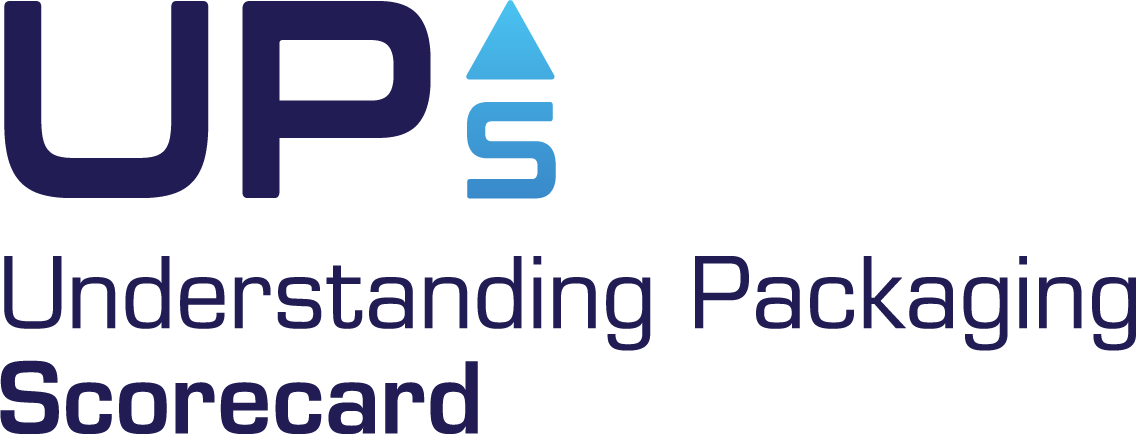Frequently Asked Questions
We have received a lot of questions about the UP Scorecard spanning a wide range of topics. Take a look through some of these frequently asked questions below along with answers from our team of experts!
About the UP Scorecard
The UP Scorecard is a science-based online tool to help users select foodware and food packaging that is safe and environmentally sustainable. It measures commonly used foodware and food packaging materials with a single yardstick. Scores are provided for plastic pollution, chemicals of concern, climate, water use, sustainable sourcing, and recoverability. The UP Scorecard is therefore the first-ever, free, and comprehensive tool for making sustainable purchasing decisions for these products based on the latest available science.
The UP Scorecard is primarily a B-2-B tool. It is designed to help those working in any part of a food business’ sustainability, sourcing, or accounting departments to quickly find the packaging that best fits the interests of business operations, minimizes environmental and human health impacts, and meets consumer demands.
The UP Scorecard uses average data to provide a baseline comparison between generic material types. If you have more details about things like the number of times you reuse a steel tumbler in your shop, the recycled content of your paper cups, the distance a packaging product is shipped to reach you, or applicable sustainability certifications, all that information can be added into the UP Scorecard’s analysis. This allows you to tailor the indicator values to your individual case. Similarly, if you know more about the local availability of recycling or composting in your area, you can adjust the settings in the UP Scorecard to find the most sustainable options given your local conditions as well.
You also have the option to create new foodware and food packaging products, based on the common materials that are available in the UP Scorecard. This allows you to assess and compare new products along with those already available in the tool.
The UP Scorecard was developed through an unprecedented collaboration of leading food service companies, NGOs, and technical experts. It provides an authoritative resource for businesses as well as for environmental and human health advocates. Read more about the partners within the Single-Use Material Decelerator (SUM’D) behind the tool. Further improvements and expansions to the UP Scorecard are planned for the future.
Trust is very important for the integrity of the UP Scorecard. The following three core values are in particular therefore emphasized when developing the UP Scorecard:
- Full transparency: Methodology, calculations, and the identity of supporters/developers are available for all to see.
- Science-based methodology: Methodology and calculations are based on current science and expert judgement.
- Broad based community engagement: The tool is maintained, developed, and supported by a multi-stakeholder group including food service companies, NGOs, and technical experts.
Using the UP Scorecard
There are hundreds of unique food packaging materials available on the global market. Due to data limitations, we have prioritized many of the most commonly used materials to include as generic products in the current version of the UP Scorecard. Multiple new and novel alternative materials are also now entering the market – many of which are complex plastics or multilayer packaging all containing different base polymers, additives, and relying on diverse manufacturing processes. The UP Scorecard is a work in progress and is currently in a beta stage. As more information on these novel materials are made publicly available, we hope to be able to incorporate more of them into the UP Scorecard in future versions of the tool.
Nevertheless, you do have the possibility to create new, customized products based on the materials that are available in the UP Scorecard. This allows you to assess and compare new products along with those already existing in the tool.
Also, we encourage purchasers to use the general principles captured by the UP Scorecard when discussing with suppliers about their products’ material sustainability and as a reflection of where the market demand is heading.
The UP Scorecard measures commonly used foodware and food packaging products with a coherent method to provide companies with the information needed to make sustainable purchasing decisions.
- It addresses the need for a consistent and comprehensive way to assess different sustainability impacts of foodware and food packaging products.
- It provides an easy way for food industry and service professionals to make informed decisions about the environmental and human health impacts of the foodware and packaging products they purchase.
- It enables users to determine which options offer the strongest protection for the environment and human health.
From an environmental and health perspective, reusables are shown to be generally preferable to single-use materials. Compared to the manufacturing of new products from virgin materials, reuse helps in most cases to reduce resource extraction, energy use, and waste generation. Even if recycling is available for single-use materials, the reduction in impacts achieved by using reusables is usually much higher. However, reusables only achieve their fullest potential if they do not include chemicals of concern, are reused as many times as possible, and contain recycled content where possible.
One of the design goals of the UP Scorecard is to advance transparency about the chemicals used in food packaging. As explained more thoroughly in the tool’s methodology, the chemicals on the Food Chemicals of Concern (FCOC) List are harmful chemicals known to have been intentionally used or present in food contact materials.
In the current version of the tool, a generic approach is used and gives all materials for which there is no publicly available and detailed information the worst score. As every food packaging article can be produced differently using various chemicals along the supply chain, it is assumed that all products contain these harmful chemicals until proven otherwise. If a user has information that chemicals of concern on one or more of the three tiers of the FCOC list are not present in a specific product, they can update this setting manually for each product to improve the scoring. This also takes into account the quality of this claim (e.g. self-declared, supported by a third-party certification, etc).
A goal for the tool is to encourage producers of specific products to provide chemical information directly to their business customers down the supply chain. They could then potentially leverage the information for product selection or to better inform their own customers about the safety of the packaging and foodware in use.
No. The UP Scorecard only considers the food packaging article itself. It does not include the secondary (or tertiary) packaging used to transport these articles.
Not yet, but this is an interesting feature we are thinking more about!
Currently, the UP Scorecard does not collect or provide information about the financial costs of the various products or provide links to products available on the market. In future updates, we are considering linking to available products and/or including information about average purchasing prices.
The current version of the UP Scorecard is intended for food packaging procurement professionals working in the field. While it is still freely accessible to consumers and available to help them compare packaging options and understand their choices, consumers are not currently the primary target audience. In the future, additional simplifications to the user interface and communications aimed at educating the general public could also be developed to better engage with them.
Methodology and Data within the UP Scorecard
Currently, the UP Scorecard only calculates impacts based on average data for the available regions (United States, Europe, Global Average). One of our top priorities is to expand the dataset within the UP Scorecard to calculate impacts also for other regions. Technically, the UP Scorecard is already setup to be expanded to include any new region. However, the main limitation is finding and processing the needed data for impact calculations to accurately reflect any new regions. We’re working on developing this further – subscribe to our newsletter to stay tuned!
Yes, many PFAS (per- and polyfluoroalkyl substances) are included. The full Food Chemicals of Concern (FCOC) List is available where you can see the names and CAS (Chemical Abstracts Service) numbers of all chemicals included. Read the full methodology for more information about how to use this list to increase a product’s score in the tool.
No, the UP Scorecard only considers the presence of chemicals of concern within the product itself. Upstream and downstream impacts they may cause are not included.
For the quantitative impact metrics (climate, water use, and plastic pollution), the UP Scorecard primarily makes use of life-cycle inventory data from the highly respected ecoinvent database. Where necessary, custom inventories were defined (for a material or a process) and implemented using ecoinvent processes. In a few cases, the tool relies on US LCI, and in one case it uses GREET (developed by the Argonne National Laboratory). For the qualitative metrics (chemicals of concern, recoverability, and sustainable sourcing), custom methodologies were developed and reviewed by groups of experts and based on recent scientific literature. See the full methodology for more information about how each of the metrics are calculated.
Yes, PP (polypropylene)-based reusables are included for multiple container types. More may be added across additional container types in the future.
Ongoing Development, Feedback, and Partnerships
The fourth beta version (0.4) of the UP Scorecard has been released and now allows for scoring entire business units (an aggregated portfolio scoring system) and a more personalized use of the tool (featuring user accounts). The COC scoring approach has also been improved, taking into account the food and material interaction The next priority improvements for the tool are currently under discussion and development relate to providing more guidance to the user and improve user experience.
The partners within the SUM’D are continuously working to review feedback about the UP Scorecard and implement improvements. New versions of the UP Scorecard will be released in phases, and you can check back on this website or sign up for our newsletter to stay up to date.
Please fill out this online survey to share your ideas on how we can keep making the UP Scorecard better and more useful for you.
Please just reach out to us via email: info@UPscorecard.org



